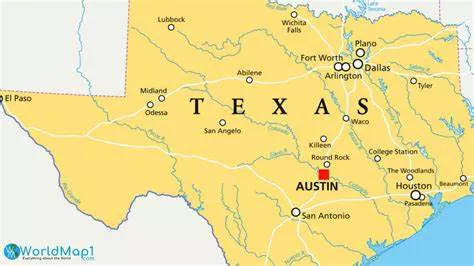Texas, the second-largest state in the United States, boasts a diverse array of municipalities, each contributing uniquely to the state’s rich cultural and economic tapestry. Understanding the number and types of these municipalities provides insight into Texas’s administrative structure and its vibrant communities.
Overview of Texas Municipalities
As of May 2024, Texas comprises a total of 1,225 incorporated municipalities. These are categorized as follows:
- Cities: 971
- Towns: 231
- Villages: 23
These designations—city, town, and village—are defined by the United States Census Bureau based on state statutes and may not always align with a municipality’s self-reported designation.
Types of Municipal Governments in Texas
In Texas, municipalities operate under two primary forms of government:
- General-Law Municipalities: These do not possess a charter and are limited to powers granted by the state’s general laws.
- Home-Rule Municipalities: These have adopted charters and derive their authority from the Texas Constitution, granting them broader powers of local self-governance.
A general-law municipality with a population exceeding 5,000 can hold an election to adopt a home-rule charter. If the population later falls below 5,000, it may retain its home-rule status.
Population Distribution Among Texas Cities
Texas cities vary significantly in population, from bustling metropolises to quaint small towns. Here are some of the most populous cities as of 2024:
- Houston: Approximately 2,319,119 residents
- San Antonio: Around 1,513,974 residents
- Dallas: About 1,302,753 residents
- Fort Worth: Nearly 996,756 residents
- Austin: Close to 984,567 residents
- El Paso: Approximately 678,859 residents
- Arlington: Around 399,825 residents
- Corpus Christi: About 316,105 residents
- Plano: Nearly 291,450 residents
- Lubbock: Approximately 269,833 residents
Historical Context
The evolution of Texas’s municipalities reflects its complex history. Nacogdoches, established in 1779, is recognized as the oldest town in Texas. Over the centuries, numerous settlements have developed, each contributing to the state’s rich cultural and historical heritage.
Municipal Designations and Legal Framework
The distinctions between cities, towns, and villages in Texas are not merely nominal; they carry legal significance. These designations, defined in the Local Government Code of 1987, determine the governance structure and powers of each municipality. For instance, the code superseded previous designations of city, town, and village with classifications such as Type A, B, and C general-law cities.
Conclusion
Texas’s extensive number of cities, towns, and villages showcases the state’s vastness and diversity. From the bustling streets of Houston to the historic lanes of Nacogdoches, each municipality adds its unique flavor to the Lone Star State’s identity. Understanding the structure and distribution of these communities offers valuable insights into Texas’s cultural and administrative landscape.

